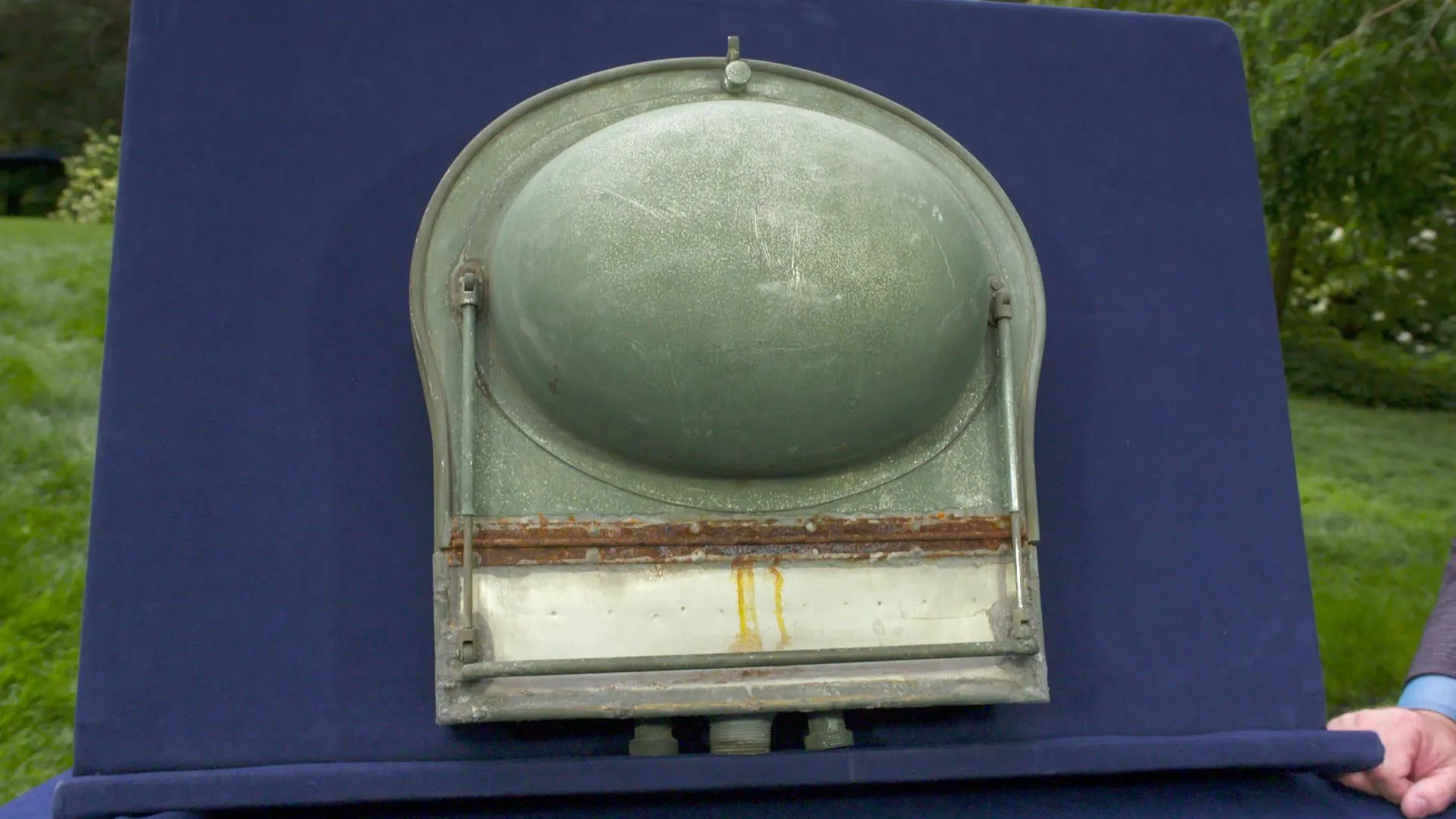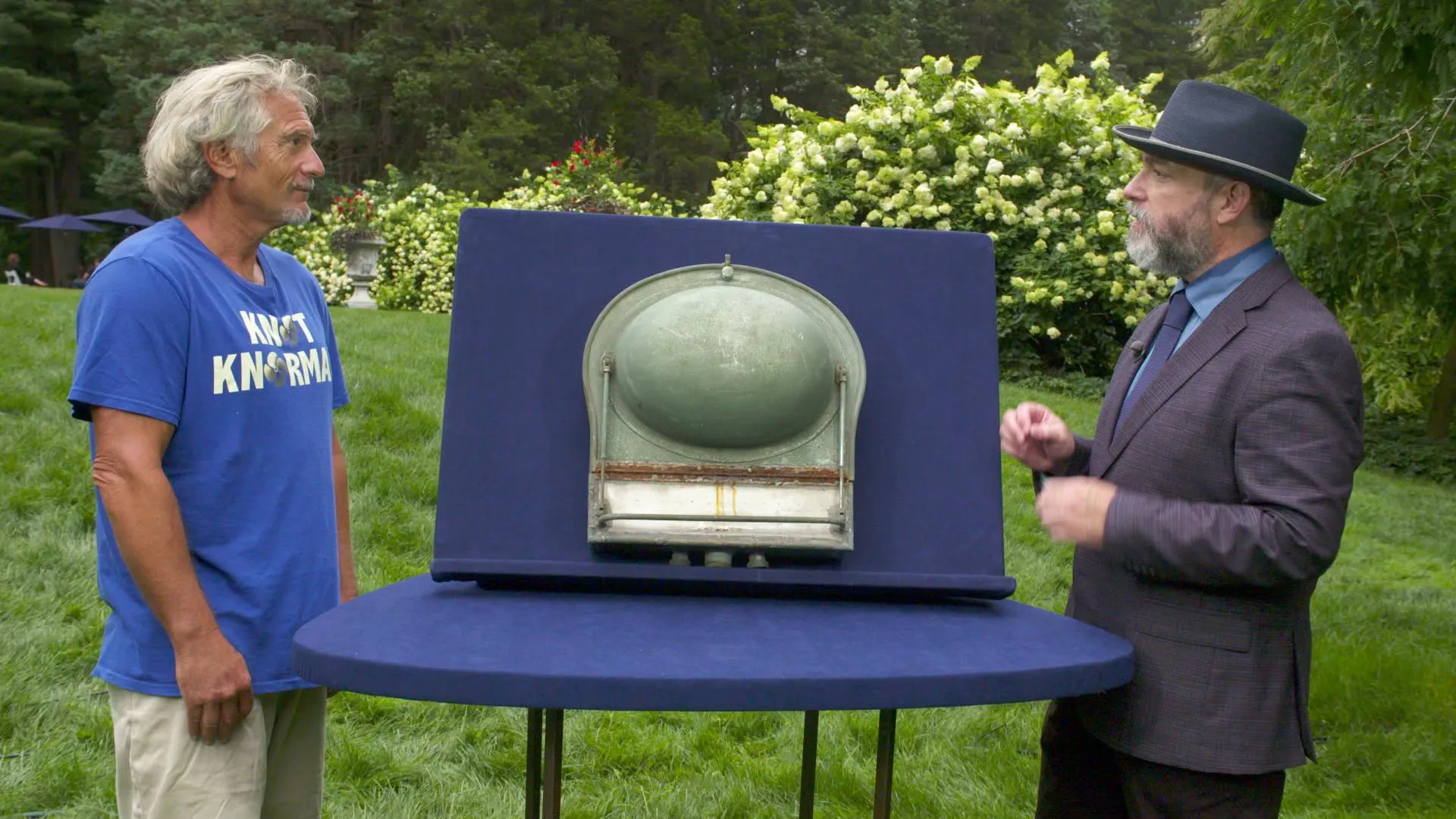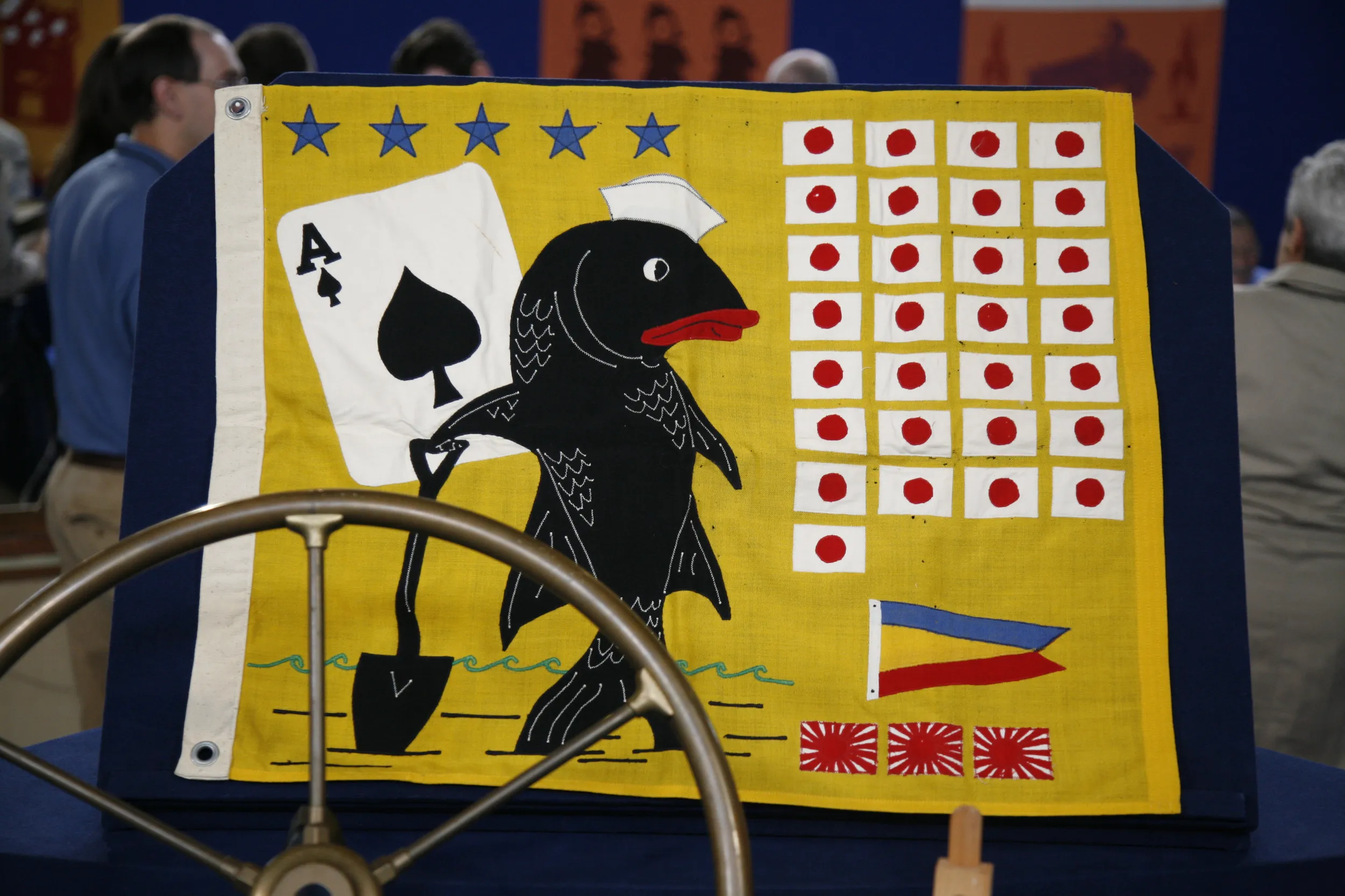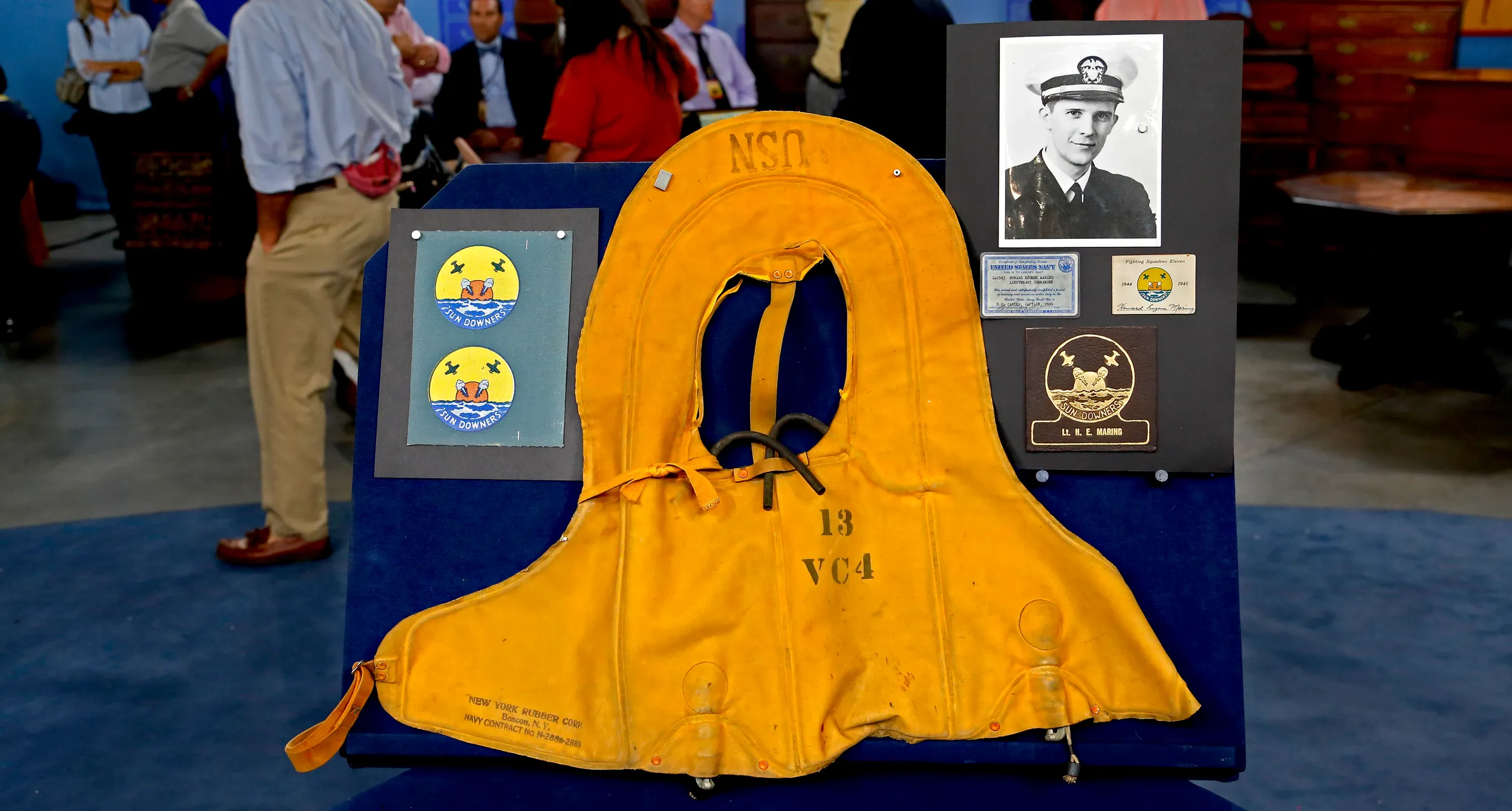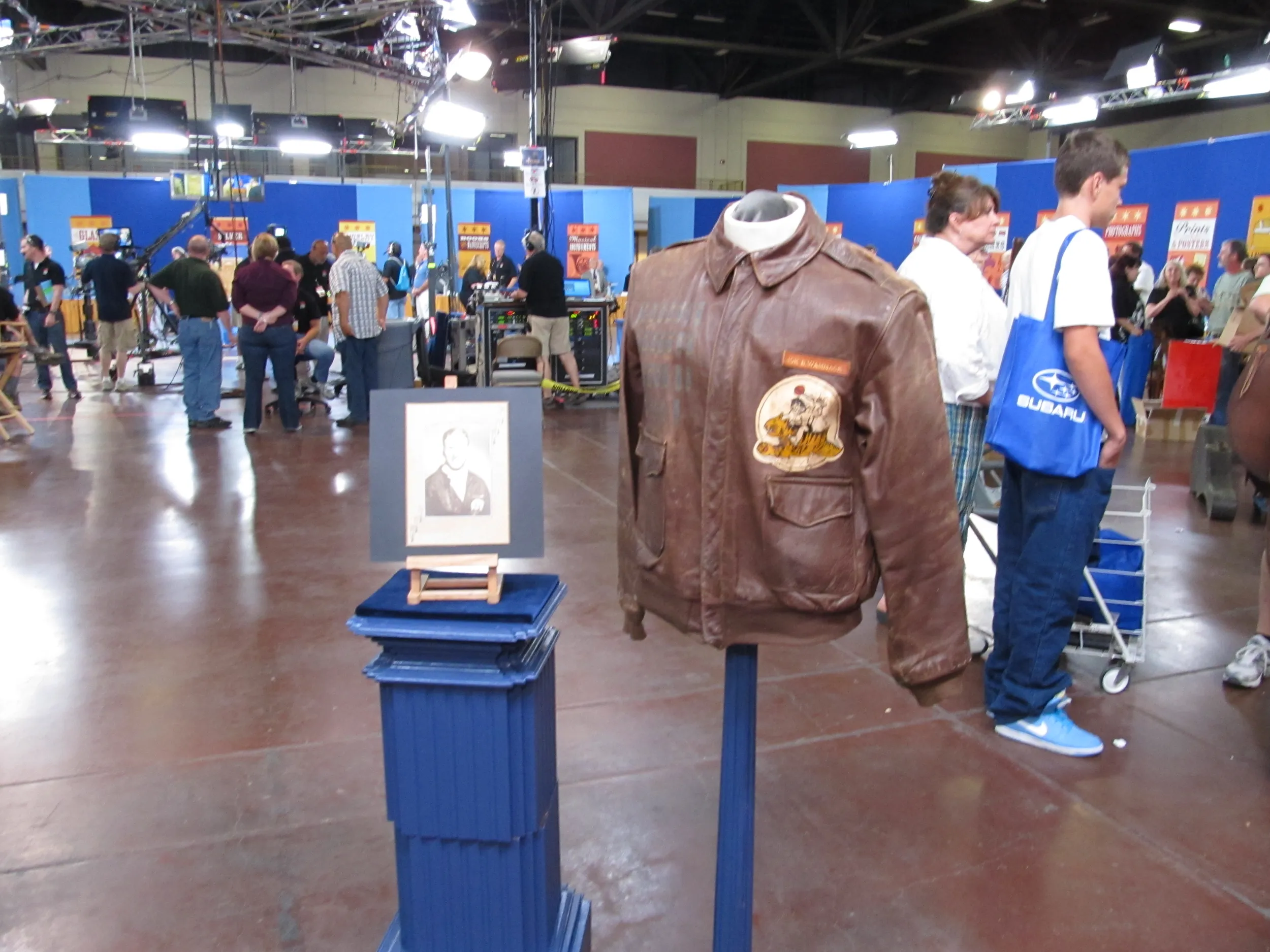APPRAISER: Where did you get this thing?
GUEST: I actually inherited this from my father, and... I mean, I'm from Groton, Connecticut, which is known as the Submarine Capital of the World, because we have a U.S. Navy base and also Electric Boat, that builds submarines for the Navy. So submarines are sort of imbued in the culture there. My father out of high school in 1939 was awarded an apprenticeship at Electric Boat and he helped to design World War II submarines. He uh went into the Navy in the submarine force during the war, then after the war, worked for the Navy Department. And it was at that time, I believe during the '50s, that they were starting to disassemble a lot of the World War II submarines. And having been involved in the design of them, my dad was present when they were taking these things apart. And he thought the sinks were kind of cool, and so he asked if he could have it, and they said, "Sure." So he took it home and it... All through my childhood, it had been in our garage.
APPRAISER: Very good. So you never hooked this up in the house or anything.
GUEST: No, I don't think my mom would have been too interested in that.
APPRAISER: (laughing) Okay. Well, it's a really interesting design. If your dad was involved in submarines, then he knew better than, than anybody how precious every square inch of space is on a fleet boat in World War II. When they went off on their war patrols, they were standing on top of uh canned food and, and rations.
GUEST: Mm.
APPRAISER: They literally packed those boats with every ounce of material that they were gonna need for the time that they were going to be out. This saves a lot of space. So we're gonna open this up and show everybody how that works. There we go. So when you need to use the sink, you've got your water, hot and cold, available to you there, you fill the basin, and then when you're done, when you fold that back up, all that water that you have used goes right into the drain that's built into the bottom of it.
GUEST: Mm.
APPRAISER: So it's a rather beautiful... But you see, what we're saving here is about... About a foot of space.
GUEST: Yeah, sure.
APPRAISER: And that adds up.
GUEST: Yeah, yeah.
APPRAISER: So that's kind of a big deal. It's interesting that your dad had that experience and this was the thing that he wanted to save. Or maybe he asked for a periscope and they said no.
GUEST: (laughing): Right.
APPRAISER: The way that it works, it's fun to do.
GUEST: Yeah, it really is.
APPRAISER: It's, it's a conversation piece. If it was mine, honestly, it'd be in the living room. I'd run water to it, it'd be in the living room. I'd make everybody stand and watch. The sink itself is stainless steel. And then the fittings are, uh, chrome or plated brass.
GUEST: Okay.
And you can see where that brass is shining through there, where it is, where it has worn.
GUEST: Yes.
APPRAISER: On the market today, a retail value I would expect to see for this is between $2,000 and $3,000.
GUEST: Wow! That's more than I would have expected. Hm!
APPRAISER: And a lot of that has to do with the fact that it does tick a lot of the boxes. It's interesting to look at. It's a great conversation piece. It's utilitarian. Uh I mean, today we… there's the big movement with people building the tiny houses.
GUEST: Yes.
APPRAISER: Who wouldn't want to hook that up in their house?
GUEST: That's what I said! (both laughing) Thank you so much.
APPRAISER: You still see folding sinks in these, in submarines today.
GUEST: Oh, really.


